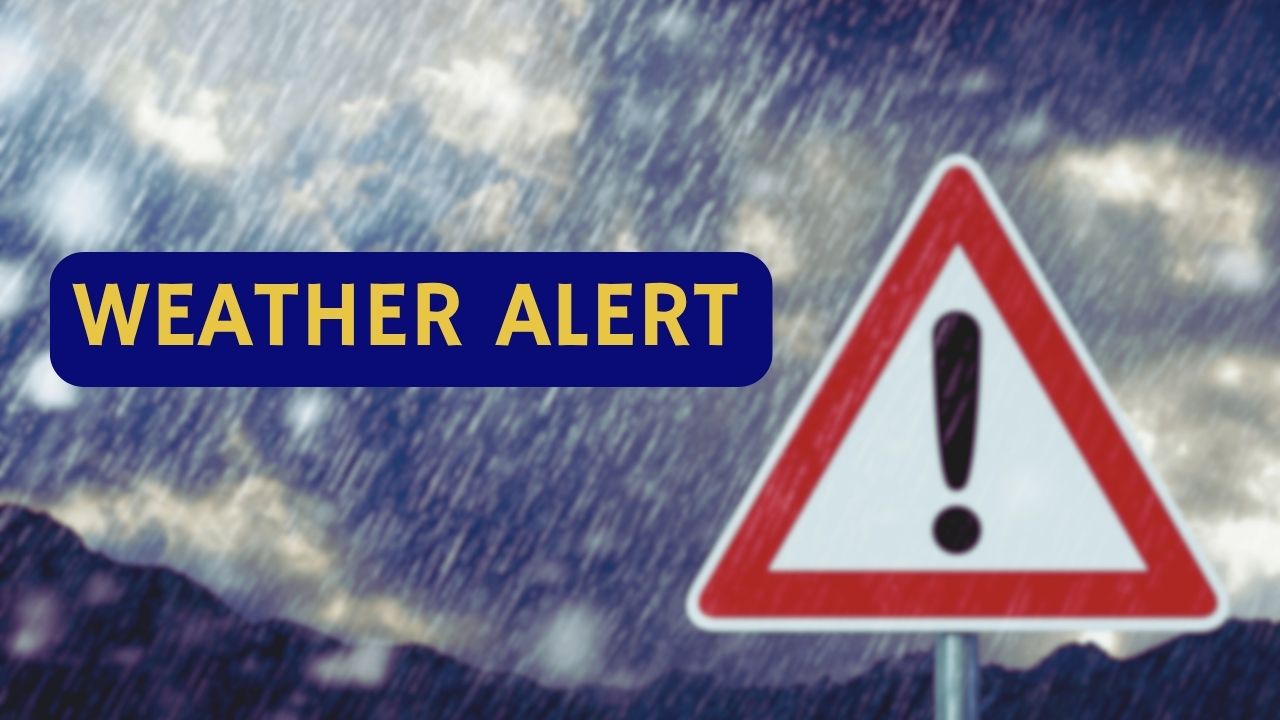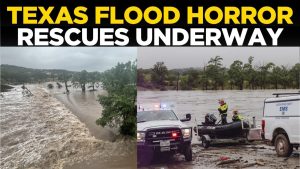Central Texas is no stranger to dramatic weather, but the past 72 hours have brought conditions that are now being compared to the most catastrophic flash floods in the state’s recent history. From sudden deluges in the Hill Country to rising rivers in the Brazos Valley, thousands of residents are under alerts as officials scramble to manage dangerous flooding. This article outlines everything you need to know about today’s Central Texas weather alert — from city-specific forecasts to climate context, impacts, and safety steps.
Current Weather Alert Overview
As of this morning, the National Weather Service has issued multiple active weather warnings for the Central Texas region, including:
-
Flash Flood Warnings for Travis, Williamson, Burnet, Kerr, and Llano Counties.
-
Flood Watches covering a wider area including Bexar, Comal, Blanco, Hays, and Gillespie Counties.
-
Severe Thunderstorm Watches in effect across northern segments including McLennan and Bell Counties.
These alerts are triggered by intense rainfall rates — some exceeding 5 inches per hour — that have already resulted in washed-out roads, overflowing creeks, and widespread property damage.
Major Affected Cities & Regions
Austin & the I-35 Corridor
Austin has received over 8 inches of rainfall in the past 36 hours, much of it falling in short, intense bursts. Barton Creek and Onion Creek are both out of their banks in places, with several low water crossings closed. Traffic along I-35 was briefly halted overnight due to flooding near Riverside Drive.
Despite breaks in the rain this afternoon, more storms are forecasted tonight, particularly west of MoPac, where saturated soils may cause immediate runoff.
Waco & the Brazos Valley
Waco has seen modest rainfall compared to the Hill Country, but radar indicates that convective storms forming to the west could impact McLennan County later this evening. The Brazos River remains below flood stage but is rising. Expect delays along Highway 6, particularly in lower-lying areas like Valley Mills and Speegleville.
Temple – Killeen – Fort Cavazos
This corridor has dealt with intense thunderstorms overnight, causing isolated flash flooding in Nolanville and Harker Heights. Crews have responded to multiple high-water rescues near Nolan Creek. Rain chances remain elevated tonight, especially along the US-190 corridor, which often acts as a channel for developing thunderstorms.
San Marcos & Hill Country Entry
The San Marcos River is one of the most flood-prone in Texas. During this event, levels have climbed rapidly, prompting evacuations in low-lying areas near the university and downtown. Rainfall totals exceed 10 inches in upstream watersheds near Wimberley, increasing the downstream flood threat. Hays County Emergency Services have deployed mobile alerts urging residents to avoid the Blanco River crossings.
San Antonio Metropolitan Area
While San Antonio hasn’t borne the worst of the rainfall so far, the city remains on high alert. The northern suburbs, particularly in Comal and Kendall Counties, have recorded intense precipitation. Boerne and Bulverde experienced 4–6 inches of rain overnight. The San Antonio River Authority is monitoring several tributaries near flood stage, and more rainfall is expected around Stone Oak and Helotes.
College Station & Aggieland
Brazos County remains under a flood watch. College Station has seen lighter rainfall compared to the Hill Country but is facing secondary impacts as water drains into the Navasota and Brazos rivers. The slow rise in river levels has raised concerns about overbank flooding by mid-week.
Ingleside: Coastal Energy and Influence
Although Ingleside sits along the coast over 180 miles southeast of Austin, its meteorological contribution to Central Texas weather cannot be overstated. Current conditions there are hot and humid — with a temperature of 92 °F, dewpoints near 77 °F, and Gulf waters reaching the mid-80s. These values contribute immense moisture to the atmosphere.
Southerly winds carry this warm, saturated air into the Central Texas interior. As the air encounters the elevated terrain of the Hill Country, it’s forced to rise — creating ideal conditions for heavy rainfall. Essentially, Ingleside’s tropical moisture acts like a firehose feeding the inland storms, helping them to develop more rapidly and dump greater rainfall over time.
Rainfall Totals & River Crest Reports
The past three days have delivered astonishing rainfall totals:
-
Kerrville: 10.3 inches in just 3 hours
-
West of Austin (Pedernales River Basin): 13.8 inches in 5 hours
-
Blanco River at Wimberley: Cresting at 25 feet (flood stage is 13 feet)
-
Guadalupe River near Hunt: Expected crest at 26 feet
-
San Gabriel River at Georgetown: Overtopping levees as of this afternoon
Some regions have recorded precipitation that corresponds to 500-year to 1,000-year recurrence intervals, meaning events this intense are incredibly rare and extremely dangerous.
Emergency Response & Impact Assessment
The severe weather has led to widespread disruptions:
-
Fatalities: 70 reported across Texas; 17 in Central Texas alone
-
Missing Persons: 11 campers unaccounted for near Kerrville
-
High-Water Rescues: Over 850, including 43 via helicopter
-
Road Closures: TX-29 in Liberty Hill, RM-1431 near Lago Vista, US-281 by Marble Falls
-
Power Outages: 118,000 at peak; over 40,000 still without service
-
School & Office Closures: Dozens of ISDs have suspended classes; many county buildings closed
Why Central Texas Is So Flood-Prone
Central Texas is referred to as “Flash Flood Alley” due to its combination of intense rainfall potential and unique geography. Here’s why it’s so vulnerable:
-
Topography: The Balcones Escarpment acts as a natural ramp that forces moist air upward, triggering storm development and enhancing rainfall.
-
Thin Soils & Urbanization: Much of the region has poor drainage, and rapid urban development has further decreased the land’s ability to absorb rainfall.
-
Hydrology: Small creeks like Shoal Creek and Onion Creek can rise 10+ feet in an hour during extreme rainfall, inundating neighborhoods quickly.
The Meteorological Setup: How This Happened
The current situation has its roots in Tropical Storm Barry, which made landfall along the Gulf Coast earlier in the week. As the storm dissipated inland, it left behind a plume of tropical moisture that has been dragged into Central Texas by prevailing southerly winds.
Simultaneously, a stalled upper-level disturbance over western Texas has created a low-pressure zone that encourages lift. These two factors — moisture and lift — combined to generate training thunderstorms, where storm cells form and repeatedly pass over the same region, producing massive rainfall accumulations in short periods.
Climate Trends Behind the Flooding
Several broader climate trends have made events like this more likely:
-
Warmer Gulf of Mexico: Sea surface temperatures near Ingleside are 2–3°C above normal. This allows more moisture to evaporate and enter the atmosphere.
-
Higher Atmospheric Ceilings: A warmer atmosphere holds more moisture. Every 1°C increase in temperature allows roughly 7% more water vapor capacity.
-
Slower Storm Movement: There’s growing evidence that mid-latitude weather systems, including storm systems over Texas, are moving more slowly due to changes in the jet stream — allowing storms to linger and dump more rain.
Safety Guidelines for Residents
Immediate Safety Actions:
-
Avoid Driving Across Flooded Roads. Just 12 inches of water can float a car, and 18–24 inches can carry away larger vehicles.
-
Stay Alert at Night. Most flood-related deaths occur after dark when water is harder to see.
-
Have Multiple Alert Sources. Use NOAA radios, phone apps, and wireless emergency alerts.
-
Pack Emergency Kits. Include medications, flashlights, portable chargers, and backup water.
-
Respect All Road Closures. Barricades are often placed because the road underneath has been compromised or collapsed.
Short-Term Forecast & Recovery Timeline
-
Tonight: Scattered storms continuing west of I-35; rain tapering off east of San Antonio
-
Tuesday: A drier pocket moves in, but isolated storms could develop along residual boundaries
-
Wednesday–Thursday: Low storm chances; rivers will still be rising downstream
-
Cleanup Operations: Emergency crews advise waiting 24 hours before returning to flooded homes; damage assessments begin Wednesday morning
Expect a long recovery period, especially in towns like Llano, Junction, Marble Falls, and smaller communities where access remains limited.
Conclusion
Central Texas is facing one of its most dangerous and disruptive weather events in recent memory. From the urban cores of Austin and San Antonio to the rural Hill Country and even the moisture-rich coast near Ingleside, this system demonstrates just how interconnected Texas’s weather systems truly are.
Flash flooding will always be a threat in this region, but as rainfall intensities increase and development expands, preparation becomes even more critical. Stay informed, take alerts seriously, and never underestimate the power of moving water.




